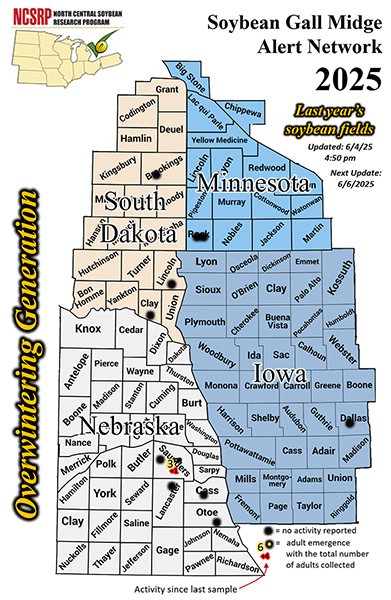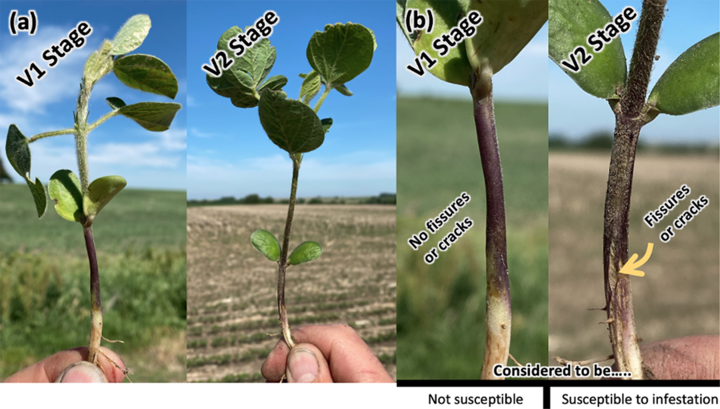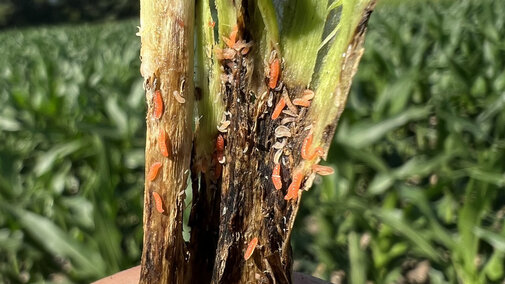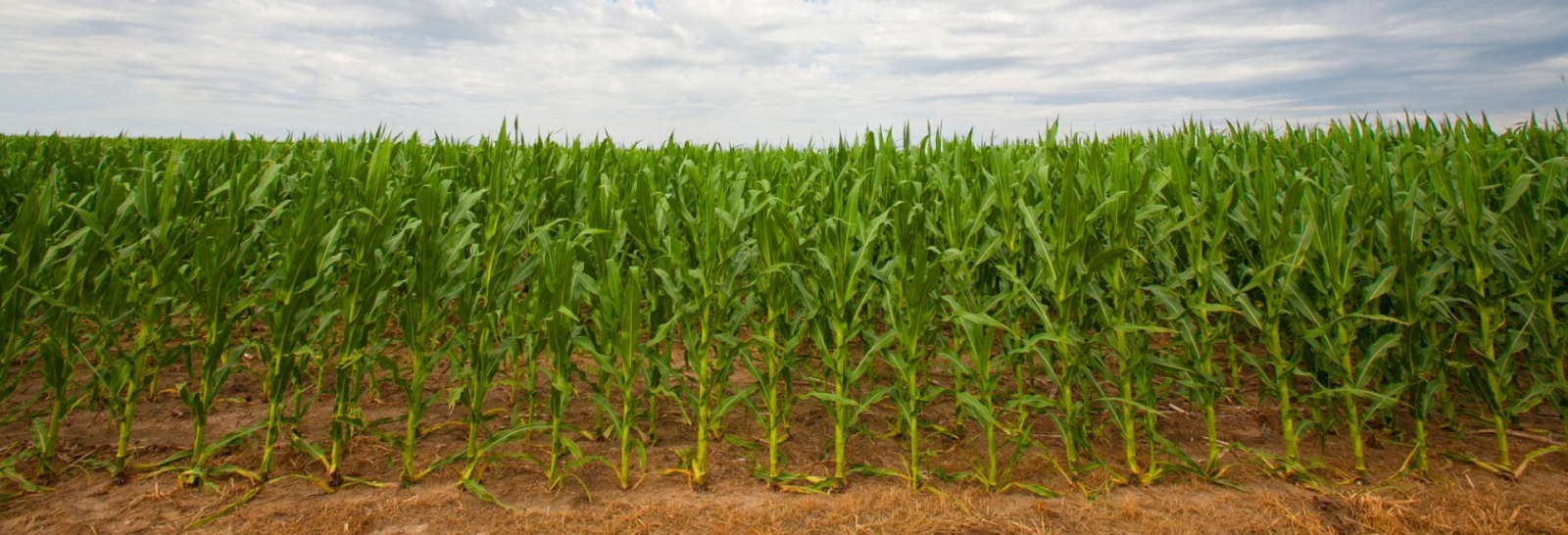Soybean gall midge adults have been detected in east-central Nebraska, marking the beginning of the 2025 emergence period and signaling risk for soybean fields. Two adults were collected on May 30 from a field in Saunders County (Figure 1), with one additional adult found at the same site on June 4.

When to Spray for Soybean Gall Midge
Soybean growth stage is a critical factor in susceptibility of soybean to the midge. Emerging in the spring from last year’s soybean fields, soybean gall midge adults lay eggs in fissures of new soybean plant stems. It appears that all soybean plants produce fissures, but these cracks don’t appear until the V2 stage (Figure 2).
Soybean planted in late April and early May are mostly at the V2 stage; however, those planted in mid- to late May are VE-V1.
Growers with a history of soybean gall midge pressure may consider applying a foliar insecticide. The checklist below can help growers decide whether insecticide will benefit their field.
Soybean Gall Midge: Should I Spray Checklist
❏ Soybean gall midge adults have emerged in my area
❏ My soybean field is at the V2 stage or greater (Figure 2)
❏ I observed soybean gall midge injury in the adjacent field last year

Management Options
First identified in the state in 2019, soybean gall midge has continued to cause significant injury to soybean in eastern Nebraska and six other midwestern states, as management of this pest has proven difficult.
Foliar sprays have shown some response but are inconsistent between locations and years. No specific foliar-applied product tested to date has provided consistent control of SGM. Research to date suggests that growers can consider using a combination product that contains a pyrethroid.
If an application is being considered, it should only be made in soybean fields where a history of issues with soybean gall midge injury has occurred. Since soybean gall midge is a field edge-infesting pest, growers may only need to treat the first 60 to 120 feet of a field edge directly adjacent to a field that was injured the previous year.
Do not treat any soybean fields prior to V2, as they are not susceptible to infestation due to the lack of fissures or cracks at the base of the stem.
Hilling or covering the base of soybean stems with soil has also been found to be a very effective strategy, resulting in almost complete control of soybean gall midge. This is a difficult practice to implement when soybean plants are small, as they can easily be completely covered by soil. Studies are being conducted to evaluate the timing of hilling relative to the plant development stage. More information on hilling is available through the soybeangallmidge.org website.
Little is known about the impact that the hilling management strategy could have on soybean gall midge movement in a field. Although no field studies have been conducted, it is possible that adults may continue to move into the field until they find a susceptible plant.
With no detection of soybean gall midge in other parts of the network so far in 2025, it would be advisable to wait for emergence to occur in those areas.
Soybean Gall Midge Alert Network
Each year, the Soybean Gall Midge Alert Network provides emergence updates to help producers make timely decisions. To receive text messages or emails on soybean gall midge, sign up for alerts from soybeangallmidge.org.

